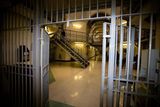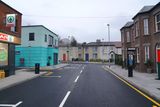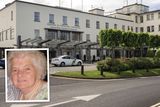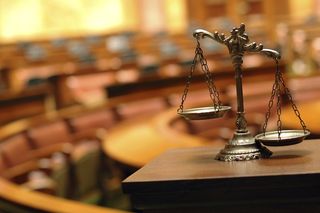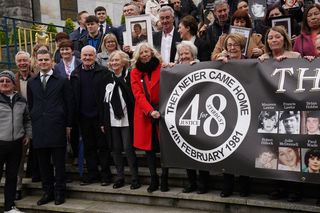"Women caught at our sleeves and begged desperately for word of their husbands"
Eyewitness account: Wesley Frost, US Consul at Queenstown
Survivors from the 'Lusitania', which was sunk by a German U-boat torpedo, walking the streets of Cobh, County Cork.
Wesley Frost was the United States Consul, stationed at Queenstown from May 1914 until 1917. He described Queenstown as "a busy consular port". The work included "the inspection of emigrants, the invoicing of Irish whiskey, mackerel and tweeds, and the issuance of bills of health to the passenger liners. A great deal of consular notarial and legal work arose from the fact that the South of Ireland is saturated with people who have American ties," he wrote.
On the afternoon of 7 May, 1915, he was working on a commercial report about counties Cork, Kerry, Tipperary, Waterford, Clare and Limerick. At 2.30pm a vice-consul rushed in and said there was a rumour in Queenstown that the Lusitania had been attacked. Frost looked out the windows and saw a "mosquito fleet" of tugs, tenders and trawlers steaming toward the harbour mouth. He rang the British Admiralty which confirmed the rumour, and relayed the distress message from the ship: "Come at once. Big list to starboard. Ten miles off Kinsale."
Frost recounted the "ghastly procession" of rescue ships, which began arriving back at port just after 8pm. "Ship after ship would come up out of the darkness, and sometimes two or three could be just described awaiting their turns in the cloudy night, to discharge bruised and shuddering women, crippled and half-clothed men... Women caught at our sleeves and begged desperately for word of their husbands."
He continued: "Piles of corpses like cordwood began to appear among the paint-kegs and coils of rope on the shadowy old wharves. Scores of the private residents of Queenstown took survivors into their homes utterly irrespective of nationality."
Frost mentioned that the most distressing of his duties was assisting survivors in ascertaining whether their relatives or friends had been saved. "Widows, widowers, parents, orphans, brothers and friends of deceased victims crowded the Consulate for three or four days; and in some cases appeared daily for weeks after the tragedy."
An American father and mother, who lost two young daughters, hoped for the recovery of their bodies. "Nothing could be accomplished, however, and their hopeless depression was pitiable."
American newspaper reporters arrived from London and gathered at the Consulate. Frost was critical of one or two reporters from what he described as "semi-sensational type of American journals". They were "a little over-eager to pick up human interest stuff, and telegraphed verbal pictures of disconsolateness and neediness which gave incorrect impressions."
Frost was involved in the preparations for the return of the dead to the US. "I saw five or six drowned women with drowned babies in their arms; and the corpse of one mother who had a dead infant clasped to each of the cold breasts which had so recently been their warm nestling-places."
The search for bodies continued for weeks. "At times as many as six or eight specially-chartered tugs were engaged in the search, and every nook and cranny of the Irish shoreline for 250 miles was gone over repeatedly."
Around 20 bodies of US citizens were washed ashore, some appearing as late as July. Among them were "Mr Keser and his wife - found on strands at a distance of 120 miles from one another; Mr Shields, of Cincinnati, washed ashore at Castlegregory [Co Kerry]; Herbert Stone, found near Ballybunion; and Captain Miller, Pennsylvania, recovered in County Galway."
Join the Irish Independent WhatsApp channel
Stay up to date with all the latest news
